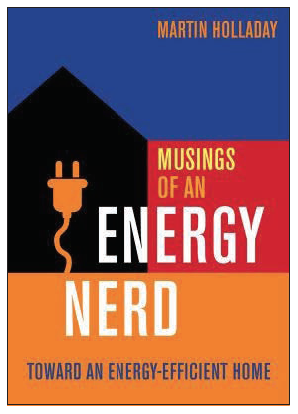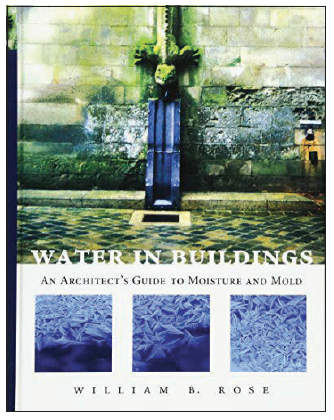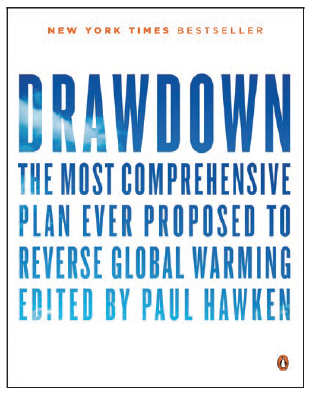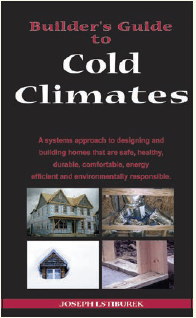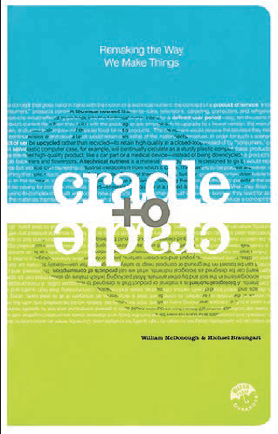What are you reading?
Book recommendations for high performance building
We asked the Green & Healthy Maine HOMES advisory panel to share what they’re reading these days, and which books have had a profound impact on how they approach their work. Some are more technical than others, but all provide a great primer to thinking about building science and high performing homes. These are some of their suggestions.
The New Carbon Architecture
BRUCE KING, New Society Publishers, 2017
Like never before in history, buildings can become part of the climate solution. With biomimicry and innovation, we can pull huge amounts of carbon out of the atmosphere and lock it up as walls, roofs, foundations, and insulation. We can literally make buildings out of sky with a massive positive impact.
The New Carbon Architecture is a paradigm- shifting tour of the innovations in architecture and construction that are making this happen. Office towers built from advanced wood products; affordable, low-carbon concrete alternatives; plastic cleaned from the oceans and turned into building blocks. We can even grow insulation and bricks!
A tour de force from the leaders in the field, The New Carbon Architecture will fire the imagination of architects, engineers, builders, policy makers and everyone else captivated by the possibility of architecture that heals the climate and produces safer, healthier and more beautiful buildings.
“This book has had a huge impact on homebuilding in a very short time. It teaches how to think about, how to lessen and potentially even reverse the carbon, or global warming, impact of a new home.”
The Timeless Way of Building
CHRISTOPHER ALEXANDER, CENTER FOR ENVIRONMENTAL STRUCTURE, Oxford University Press, 1979
In The Timeless Way of Building, the first volume of his seminal trilogy on architecture, Christopher Alexander of the Center for Environmental Structure presents a new theory of architecture, building, and planning, which has at its core that age-old process by which the people of a society have always pulled the order of their world from their own being.
Alexander writes, “There is one timeless way of building. It is thousands of years old, and the same today as it has always been. The great traditional buildings of the past, the villages and tents and temples in which man feels at home, have always been made by people who were very close to the center of this way. And as you will see, this way will lead anyone who looks for it to buildings which are themselves as ancient in their form as the trees and hills, and as our faces are.”
“Though it’s not strictly about high performance building, it’s a classic that every architect should memorize, many of my clients have read and it includes a lot of great ideas about sustainable living, starting at city scale and working down to fine details.”
Musings of an Energy Nerd
MARTIN HOLLADAY, Taunton Press, 2017
In this fascinating collection of postings from his popular “Musings of an Energy Nerd” blog, Green Building Advisor’s Martin Holladay cuts through the hype and myths about energy efficiency, sustainability and green building to present the very best ways to make your home more energy efficient.
Martin has been making weekly postings to his blog on Green Building Advisor since January 2009. Along the way, he has gathered a devoted following of “energy nerds” who await his weekly musings with rapt anticipation. For the first time, the 50 most popular posts have been assembled in book form to give homeowners a great opportunity to live a more energy-efficient life in their homes. The book begins with an overview of energy priorities, and a discussion of what we mean by terms like green and sustainable. Martin presents several options for energy upgrades for an existing house (from replacing windows to adding superinsulation) before looking at ways to improve the energy efficiency of a new house. Separate chapters follow on HVAC, domestic hot water, appliances and renewable energy, before the book wraps up with an eye-opening chapter on useless products, scams and myths (including Martin’s list of “Stupid Energy-Saving Tips”).
The New Net-Zero
WILLIAM MACLAY, Chelsea Green Publishing, 2014
The new threshold for green building is not just low energy, it’s net-zero energy. In The New Net Zero, sustainable architect Bill Maclay charts the path for designers and builders interested in exploring green design’s new frontier: net-zero-energy structures that produce as much energy as they consume and are carbon neutral.
In a nation where traditional buildings use roughly 40 percent of the total fossil energy, the interest in net-zero building is growing enormously – among both designers interested in addressing climate change and consumers interested in energy efficiency and long-term savings. Maclay, an award-winning net-zero designer whose buildings have achieved high performance goals at affordable costs, makes the case for a net-zero future; explains net-zero building metrics, integrated design practices and renewable energy options; and shares his lessons learned on net-zero team building.
The comprehensive overview is accompanied by several case studies, which include institutional buildings, commercial projects and residences. Both new-building and renovation projects are covered in detail.
The New Net Zero is geared toward professionals exploring net-zero design, but also suitable for nonprofessionals seeking ideas and strategies on net-zero options that are beautiful and renewably powered.
Water in Buildings: An Architect’s Guide to Moisture & Mold
WILLIAM ROSE, Wiley, 2005
Water in Buildings: An Architect’s Guide to Moisture and Mold is a detailed and highly useful reference to help architects and other design professionals create dry, healthy environments, without jeopardizing a project with poor iability management. Much more than a book of “quick fixes,” this practical guide illuminates an essential understanding of the “whys” of moisture problems, including valuable information on how water behaves and how its performance can be anticipated and managed in building design.
With a special emphasis on water’s role in creating mold, an issue of growing concern and liability, Water in Buildings offers the most up-to-date information on rainwater management, below-grade water management, foundations, wall and roof construction, mechanical systems, moisture and much more! Providing authoritative guidance to designers and builders, this definitive guide features: clear explanations of how water interacts with building materials and equipment; an in-depth exploration of the paths of leaks; numerous case studies on such well-known structures as Mount Vernon, Independence Hall and Wingspan (Frank Lloyd Wright); and numerous descriptive drawings and photographs.
“A good resource that provides information on enclosures that work, but also encourages the reader to consider how water moves though a structure both from the inside and outside, in different climate zones.”
Drawdown: The Most Comprehensive Plan Ever Proposed to Reverse Global Warming
PAUL HAWKEN, Penguin Books, 2017
Drawdown describes the 100 most substantive solutions to global warming. For each solution, the book describes its history, the carbon impact it provides, the relative cost and savings, the path to adoption, and how it works. The goal of the research that informs Drawdown is to determine if we can reverse the buildup of atmospheric carbon within thirty years. All solutions modeled are already in place, well understood, analyzed based on peer-reviewed science, and are expanding around the world. “To be clear, our organization did not create or devise a plan. We do not have that capability or self-appointed mandate. In conducting our research, we found a blueprint that already exists in the world in the form of humanity’s collective wisdom, made manifest in applied, hands-on practices and technologies. Individuals, communities, farmers, cities, companies, and governments have shown that they care about this planet, its people, and its places. Engaged citizens the world over are doing extraordinary work. We are finding and telling their stories.”
Builder’s Guide to Cold Climates
JOSEPH LSTIBUREK, Building Science Press, 2006
The North American Cold Climate edition of the Builder’s Guide is augmented to provide the building industry with the latest and best practical information on how to apply building science principles to structures as systems in colder regions.
“I’m a fan of Lstiburek’s books and website, Buildingscience.com. Some of his stuff is more accessible than others for the average homeowner, but it’s a good reputable source. His online website has more fun articles that can be humorously snarky.”
Cradle to Cradle
MICHAEL BRAUNGART & WILLIAM MCDONOUGH, North Point Press, 2002
“Reduce, reuse, recycle,” urge environmentalists; in other words, do more with less in order to minimize damage. But as this provocative, visionary book argues, this approach perpetuates a one-way, “cradle to grave” manufacturing model that dates to the Industrial Revolution and casts off as much as 90 percent of the materials it uses as waste, much of it toxic. Why not challenge the notion that human industry must inevitably damage the natural world?
In fact, why not take nature itself as our model? A tree produces thousands of blossoms in order to create another tree, yet we do not consider its abundance wasteful but safe, beautiful, and highly effective; hence, “waste equals food” is the first principle the book sets forth. Products might be designed so that, after their useful life, they provide nourishment for something new — either as “biological nutrients” that safely re-enter the environment or as “technical nutrients” that circulate within closed loop industrial cycles, without being “downcycled” into low-grade uses (as most “recyclables” now are).
Elaborating their principles from experience (re)designing everything from carpeting to corporate campuses, William McDonough and Michael Braungart make an exciting and viable case for change.
This article first appeared in the Spring/Summer 2020 issue of Green & Healthy Maine HOMES magazine. Subscribe today!




